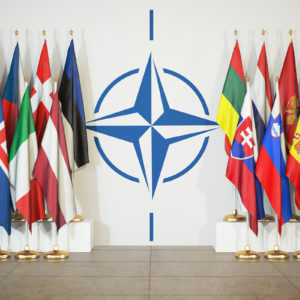This year, the North Atlantic Treaty Organization marks its 70th anniversary. In international statecraft, such long-lasting alliances are exceedingly rare. NATO’s longevity is due partly to the fact that it combines national interest, which can be fleeting, with national values, which it is hoped are more lasting.
Some, though, most notably the president of the United States, have questioned whether NATO membership remains in the U.S. national interest. While the White House avers that the commitment to NATO remains solid, even the perception of a breach between Europe and America would foster Russia’s longstanding desire to rupture the alliance.
The Trump administration’s concern over NATO partners sharing the burden of defense spending is by no means a new issue — it has been an off-and-on irritant over much of the alliance’s history. In the 1970s, Europe was spending 45 percent of what the United States was spending on the military. The Center for Transatlantic Relations notes that three factors combined to address the disparity: Moscow was becoming more belligerent, America was preoccupied in a longstanding conflict in Vietnam, and Europe was enjoying a period of relative prosperity. By the end of the Cold War, Europe was spending approximately 78 percent of U.S. levels.
Today’s situation is somewhat analogous: Moscow is becoming more belligerent, America is engaged in a 17-year war in Afghanistan (side-by-side with our NATO allies), and Europe is enjoying relative prosperity. And European military spending is beginning to rise.
The values that bind the alliance have remained constant, but NATO has not been static. In fact, its durability is linked to its flexibility. Since the fall of the Soviet Union and its Warsaw Pact allies, NATO has reinvented itself. The alliance built to face down the Soviets has taken on new challenges and missions, proving it remains the most important U.S. alliance.
A first major test for the post-Soviet NATO occurred after Yugoslavia’s dissolution. NATO took the leading role in ending the fighting and bringing stability to Bosnia and Herzegovina. And after the terrorist attacks of September 11, 2001, NATO’s Article V was activated for the first and only time. Article V commits each member to defend the others when under attack.
Invoking Article V was more than just a rhetorical expression of solidarity — our NATO allies, along with other partners like Australia, have fought with the United States in Afghanistan. More than 1,000 soldiers from NATO partners have been killed.
Sadly, the original rationale for NATO has returned in new, insidious ways.
Vladimir Putin’s Russia has moved away from liberalism and democracy toward a state now best characterized by authoritarianism, crony capitalism and corruption. Most important, Putin has acted aggressively to restore power and land lost when the Soviet Empire imploded.
While the immediate threat of military conflict between Russia and the United States is low, Russia and other states pose a serious, changing threat to America and its allies. NATO is an essential first line of defense.
From the earliest days, the military alliance was also a community of values. And while at times NATO has chosen to look the other way, promoting democracy among its members has always been a consideration.
NATO’s commitment to values became more explicit as the former communist nations began jockeying for inclusion. Would-be members must demonstrate they are market economies and stable democracies based on a respect for human rights and the rule of law. Aspirants must live in peace with their neighbors, peacefully resolving disputes. And joining NATO requires civilian and democratic control over the military.
Seventy years on, NATO remains a vital partnership and resource for the United States. It has contributed blood and treasure to the two most recent major conflicts — Iraq and Afghanistan. It has adapted in response to the new threats emanating from Moscow, shoring up defenses in the Baltic region, partnering with states in Russia’s crosshairs like Ukraine and Georgia, and providing important communications and coordination to defend against the continuing cyberwarfare.
NATO’s critics are not wrong to urge increased military spending across the alliance. Most presidents have done so and our NATO allies are responding to the call. But, as a global power, the United States will always shoulder a greater share of the burden.
As this history shows, we should look at NATO not as a drain on our resources, but rather as a net plus. America and its NATO allies have faced tensions and estrangement over policy issues. But even when tensions have been high, leaders on both sides of the Atlantic have always recognized that the alliance is mutually beneficial.
Fundamentally, NATO has endured because it is a community of shared values — of democracy, freedom, market economics, solidarity and mutual respect. The United States and our partners share a strong interest in preserving this partnership — it has worked to our common benefit for 70 years and continues to do so today.

